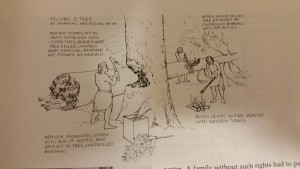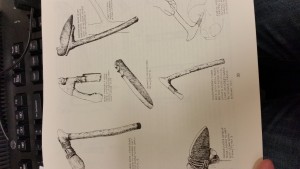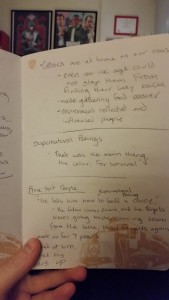My work so far with UBC and the High School practicum have been mainly either hands on, tossed in the deep end, face to face class work with students, or isolated lonely time in the Neville Scarf library finding sources for papers and essays. So starting this new position at the gallery has been a dramatic shift toward something different. For one, I’m in contact with a lot of people all the time, talking, and working together to get things done. There’s still a lot of personal work to be done, but I’ve never collaborated the way they seem to do at the gallery in my own work. What is specifically new to my experience is the amount of meetings they have.
At my secondary practicum school I think I went to two very small, and very short meetings with the department in the 10 weeks that I was there. Since being at the gallery for 3 days I have been to 4 meetings, two of which occurred today. I even had to speak about what I had been doing so far with the gallery to people from a very prominent foundation. So not only am I sharing my ideas, my work, and my specific skill set (education) with my direct supervisor at the gallery, I’m also sharing it with the directors, the marketing team, the volunteers, and several other staff as well. So far I really like it, seeing the ideas that people have, seeing how events and planning are done behind the scenes, it all feels very administrative but also very engaging with the audience the meetings are meant to benefit. Just been a new day every day so far with the experience and I feel a lot of it will help me be more vocal if I ever end up at a school as a teacher.




